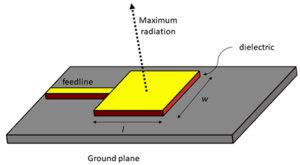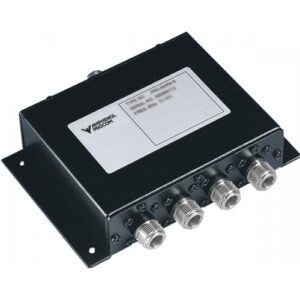Table of Contents
Understanding Industrial Microwave Ovens
Industrial microwave ovens are major innovations in the way cooking and heating are done in commercial settings, featuring rapid and efficient transfer of energy to the food product. As opposed to regular cooking techniques, the microwaves themselves do not heat the food, but instead, they penetrate it, stimulating the vibrations of water molecules and thus generating heat from within. Such a procedure alone cuts the cooking time by a large margin and substantially improves energy efficiency.

The microwaves used in industrial ovens follow the notion of dielectric heating, where a magnetron is utilized to generate the microwaves, and they are then funneled into the oven’s cooking chamber.
-
Basic working mechanism
Microwaves are forced through the cavities present in the food inside the oven, causing the vapor of that water to collide with each other, accumulating between the outside of the food and the inside of the food. This agitation is what induces the friction and feels as if the food is being heated from all the way outside to the center. Typically, the microwave with which the food is zapped operates on a 2,450-MHz frequency, meaning that the food cooks evenly and quite fast. The bottom line is that the heat source does not come from the magnets, but is instead generated through the agitation of the food’s molecules.
-
Differences between commercial and residential ovens
The most salient difference is the power output: commercial restaurants and food services typically use 1,000 to 5,000-watt ovens, whereas most homes are outfitted with 600-to-1,200-watt units. Commercial microwaves are also cladded in a more durable construction, with stainless steel inside and out. Finally, these models can include additional features, such as user-friendly interfaces and automatically adjustable settings that are easily customizable. The construction of all industrial ovens must be easy to clean to facilitate conducting health standards. I believe sanitation is vital in the servicing of food, and stainless steel is very easy to clean and maintain, limiting issues with unwanted particles or bacteria.
Advanced Features and Technology in Commercial Microwaves
Nowadays, commercial microwaves are far more advanced than microwaves available in any average household. They come with features that drive quality, efficiency, and safety to best accommodate modern, fast-working commercial kitchens. The following essay concisely describes some of those advancements and their practical uses.
Programmable Settings
Many commercial microwaves these days come with programmable settings. What this means in practice is that kitchen staff can program precise cooking times and power levels and use this information whenever a specific dish is cooked. Overheating or overcooking a dish because a microwave performs a little differently than the previous batch is a common problem in many restaurants or cafeterias. However, a high-end commercial microwave takes care of this problem by storing multiple programs so that with a simple push of a button this kitchen equipment can initiate complex cooking cycles.
Innovations for Uniformity and Safety
Regular microwaves notoriously do not heat food evenly. In order to address the challenge, manufacturers have catered inverter technology which allows for a consistent flow of heating at varying levels, as opposed to regular microwaves that are either on or off. In the case of some commercial microwaves, humidity sensors are another technology used to keep the product from being overheated. This particular microwave feature senses the moisture levels and adjusts both cooking time and power. Finally, when it comes to safety, automatic shut-off sensors are included to prevent the occurrence of overheating, which might possibly result in fires. In addition to that, a microwave will never start if the door is open, because most modern kitchen microwaves are equipped with certain enhancements in the shape of door seals and locks .
Specialized Functionalities
Apart from regular commercial microwaves, there are models used for other purposes and they have features accordingly. Some of those special functionalities include express defrost, baking, and grilling. Many brands offer commercial microwaves with steam ovens that are perfect for health-conscious kitchens serving a lot of healthy vegetable dishes. Models that combine power and functionality of a commercial microwave with compactness essential for any food truck or small kitchen are also available.
Utilization and Benefits in Professional Kitchens
The development of industrial microwave ovens in professional kitchens has enabled foodservicess architects to operate faster, serve quickly, and tend to other cooking equipment seamlessly. They provide food options with high-value quality attributes while efficiently catering to rapid demand. Industrial microwave ovens have significant roles in food cooking policies since it accelerates servers’ operations in kitchens. Equally, the inventions have had effects on service requirements in kitchens, and it has provided vital procedures in applying cooking accessories together.

Roles in Food Service
It is important to note that industrial microwave ovens have significantly contributed to the efficient and timely services provided in current kitchens. The appliances are best suited due to their significant roles in heating, cooking, and defrosting food with high speeds. They are known to evenly cook foodstuffs in a shorter period compared to other places since they do not require time to be ready for use. Most importantly, these unique appliances reduce the unnecessary time taken to prepare food; hence, they allow the kitchen to serve their customers more quickly . In addition, the ovens ensure that customers do not have to wait for food for a duration tarnished when demands are taken, and the cooking processes are applied.
Effects on Kitchen Requirements and Services
Food cooking systems require proper equipment, which typically takes a relatively long time compared to others due to its salient effects. The application of industrial microwave ovens hastens the cooking process to streamline operations while promoting the quality of food and servicers. The appliances support kitchens to operate dur4ing high demands of services for quick service delivery . Besides, rapid operation and heating capabilities increase the available spaces in restaurants and facilities to tend to and serve more people.
Application with Other Cooking Equipment
Industrial microwaves facilitate other common cookers in the kitchen and services cater to a variety of processes. For instance, servers use it for defrosting meats quickly and then finalizing them into the grill when required. These processes tend to operate quickly, and a chef can prefer preparing foods in the oven while cooking the main dishes in the stovetop. As much as it enhances the provision of quick and efficient services, the situation facilitates services delivery by enabling the mixing of varying food flavors.
Selecting the Right Commercial Microwave
Selecting the commercial microwave is a complex process. Several factors should be considered, from assessing kitchen needs to energy requirements and durability concerns. The final decision should be the best one since it might affect many other kitchen operations and decrease cooking, heating time. If the correct choice is made, the kitchen will operate benevolently, the food quality will remain high, and the investment will indeed be returned.
Assessing Kitchen Needs and Capacity
First of all, it is essential to start with your kitchen’s needs and digitize capacity. The point is that there are many different sizes and power options for such items. Some commercial microwaves come as small ones with 1,000 watts , while others might be above 5,000 watts . As a result, heavy-duty restaurants with a high volume of food to process and heat could require a larger and more powerful commercial microwave. Otherwise, it could soon break due to overuse. On the contrary, small cafes may remain satisfied with small appliances.
Energy Requirements and Compatibility
Moreover, energy requirements should also be considered since different microwaves use significantly different amounts of electricity. There are, for example, microwaves that are ENERGY STAR rated. It is obvious that they use less electricity and would be more cost effective. It is necessary to know the microwave’s electrical specification, including voltage and amperage. Otherwise, the appliance would not be compatible with the kitchen’s existing power capacity. The compatibility is crucial since the microwave could not be connected to the power supply and heated and cooked food otherwise.
https://dolphmicrowave.com//dolphmicrowave.com//www.youtube.com/watch?v=79c2yN4F2Vo
Durability and Warranty Considerations
Finally, the durability of the commercial microwave is also crucial for the kitchen that needs performance, reliability, and capacity. Some high-quality items, mostly made of stainless steel, can heat and cook food for many thousands of hours before breaking. Meanwhile, low-quality microwaves may stop operating months after the acquisition. Hinges, door mechanism, and interior should also be considered. The warranty is essential as it is an indicator of the appliance’s operation period. I would recommend choosing a microwave with a long-term warranty.
Maintenance and Food Safety Aspects
Aside from extending their lives, maintaining commercial microwaves addresses critical food safety issues. To minimize risks and create a healthy eating environment, there are several essential regular cleaning, proper food rethermalization, temperature control, and safe operation practices. This paper offers guidance for proper utilization and maintenance of commercial microwaves to lower risks.
Maintenance practices
Overall, regular cleaning and maintenance are necessary for proper and safe function of commercial microwaves. Daily cleaning is required to ensure that the appliance is always ready for use. Asmicrowave chargrills runat full powerefficiently cleaning should be up to date to avoid any health hazards. The inside should be wiped with a food safe commercial cleaner to remove all food particles, and grease, which might affect the microwave performance. Besides the interior, the exterior, control panel, and door seals should also be wiped on a regular basis. In addition, a professional should inspect and clean all the components, such as the fan, grill, magnetron, and waveguide, at least once every six months to ensure their optimum function. Moreover, such thorough inspection helps ascertain whether the microwave is properly calibrated.
Food rethermalization and temperature control
Food rethermalization and proper temperature control are essential to prevent foodborne illnesses. First, the use ofcommercial microwaves isthus a careful process, which always requires a close inspection. Particularly, they should only be used to reheat foods to an internal temperature of at least 165°F . To measure, this temperature can be used as a reliable instrument for controlling reheating and rethermalizing temperatures. Next, the staff should remember to take foods out of the microwave, stire or rotate them, and measure the temperature in more than one place. As a result, even temperature distribution isthus one of the primary food rethermalization tasks. Indeed, there cannot be any unsafely cold spots, which are the implied hot spots where the food is dangerously hot.







